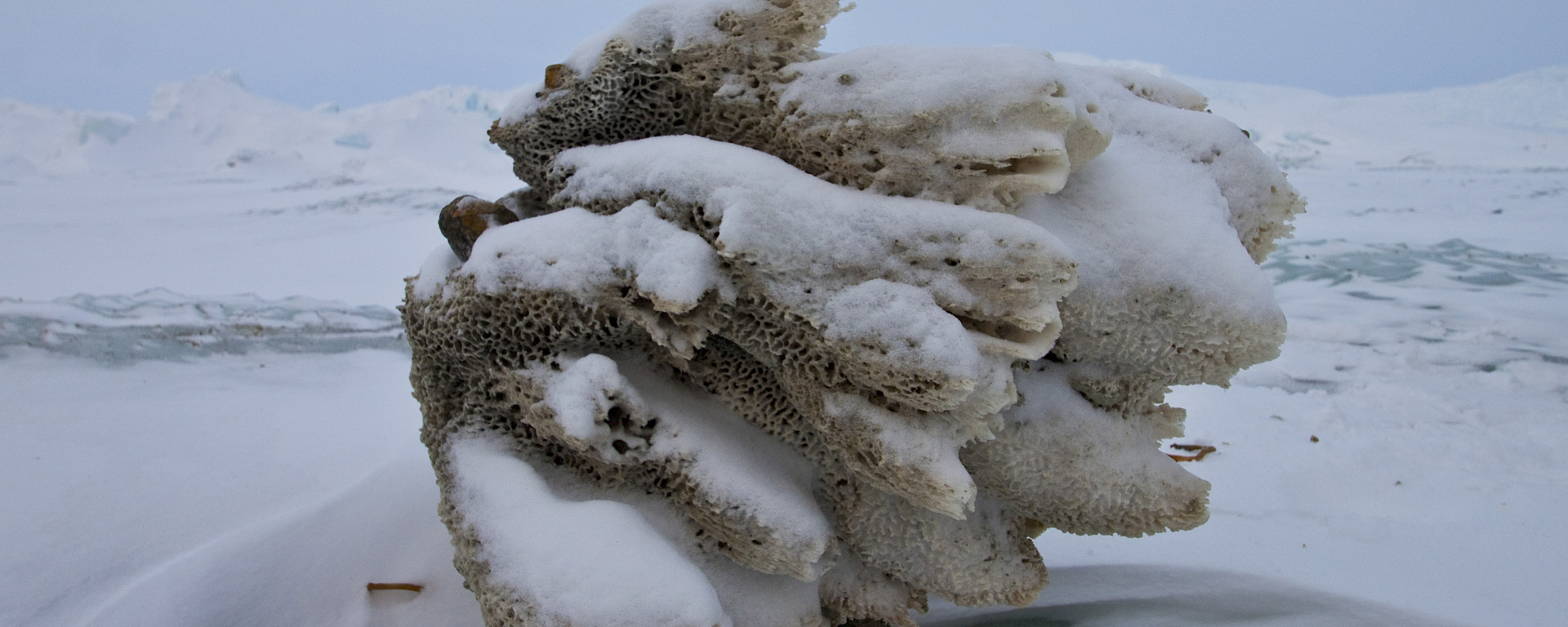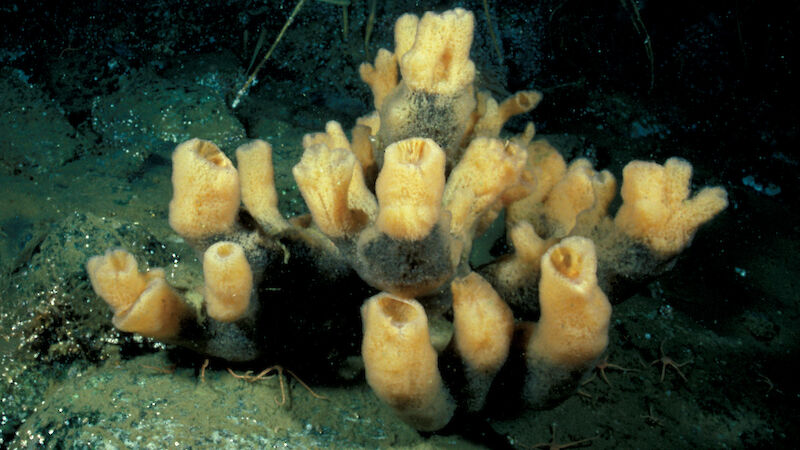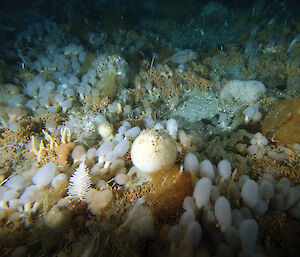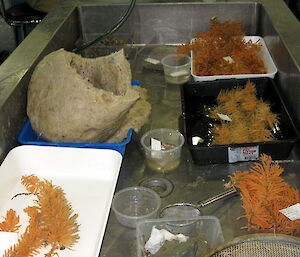Scientists In the mid 1700s suggested that sponges were animals rather than plants. At this time, organisms were thought of as ‘animal’ if they were capable of muscular movement. The phylum was eventually named Porifera (meaning ‘pore-bearing’), after the perforated surfaces of the sponge’s tissue. The taxonomic classification of sponges is still unresolved, especially at the lower taxonomic levels.
About 5,000 to 6,000 species have been described worldwide, but the number of species may be 3 times greater. The number of sponge species within Antarctica is presently unknown.
Antarctic sponges are long-lived and sensitive to disturbance. This makes them an indicator species, reflecting the health of their environment.
Sponges are sessile (non-mobile) filter feeders. They regularly process large volumes of water (up to 200 L of seawater per hour).
Sponges are the source of more natural chemicals than any other marine invertebrate. Many of these compounds have potent bioactive properties. These include anti-tumour, anti-inflammatory, anti-viral and anti-microbial properties. Sponges can produce chemicals for defence, to repel parasites, to assist interactions with fast-growing species and for communication with other organisms.
Sponges are often host to a diverse array of microscopic organisms. Many of these form intimate, symbiotic relationships with the sponge. Microbial biomass can even contribute to a sponge’s structural rigidity.





